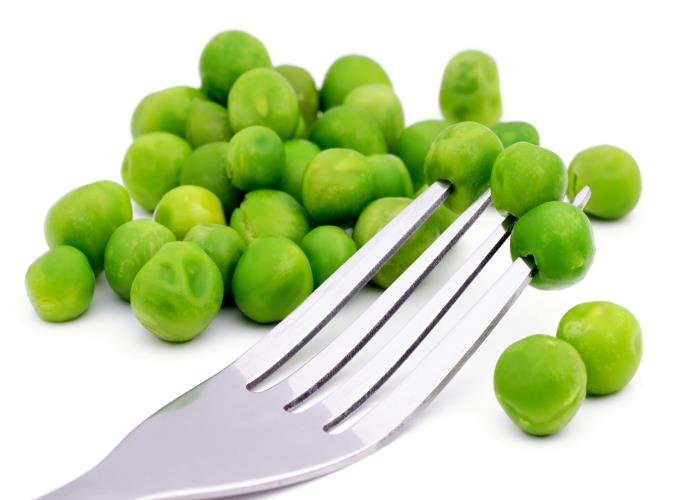How to grow your own peas

Here's how to get your very own crop of delicious, garden-fresh peas.
Sweet and petit: for me peas offer a snippet of paradise in a pod. But there are two golden rules when growing your own.
The first: they taste infinitely better straight from the pod than they ever will after being stored. In season, pick, cook and eat the same day before they turn bitter and starchy.
The second: no mater how many peas you shell, you always seem to be left with a small eggcup full.
But, honestly, they’re worth it. Pluck a pea from its shell and you’ll get luscious, buttery sugars to die for. What’s more, children love to grow them; they freeze well (providing a snap of spring in the depths of winter) and are eminently versatile. Purees, pasta, pesto, pilafs. You name it.
Getting started
As a cool weather crop, peas can be planted direct in the ground or in pots outdoors now. Right up until the end of June in fact. You can also sow again in autumn for an early crop when the weather picks up next spring.
They like a sunny location, ideally with some well-rotted compost dug in a few weeks prior. But they can be given a headstart indoors, sown into root trainers – tall pots that allow for their long root run. I like to use toilet rolls innards.

If you’re sowing outdoors, carve a shallow, flat-bottomed trench with a hoe and water. Sow 5cm apart in rows around 70cm apart.
Pea seeds are large and easy to handle so ideal for children to sow. Plus, eating the results of your growing is guaranteed to turn even the staunchest vegetable hater into a veritable herbivore.
You can grow a decent crop of peas in a large pot or window box too. Avola and Bingo are dwarf varieties that need less space and less support, reaching only 60cm high. Peas grown like this will like a little nitrogen-rich feed now and again.
Aftercare
Netting is essential if you’re sowing outdoors as birds love the seeds. And, as the seedlings grow, slugs might need discouraging too. Try copper tape, grit or, if necessary, bait.
Ensure you sow another row as the first one pops up: a pea glut is hard to pod all at once. Water to encourage pods, but don't be tempted to chuck a load of fertiliser at them. Pea plants 'fix' nitrogen into the soil through their roots, so you’ll get natural fertiliser for free.
Harvest regularly to keep them coming and, once the plants are spent, cut at the base rather than pulling up.

What to sow
If you’re sowing now, you could try an early variety such as Feltham First or Kelvedon Wonder’ ready in about 10 weeks.
I find early varieties benefit from a covering of fleece to prevent pea moth. While you’ll rarely see her laying eggs, you’ll know she visited. Instead of finding plump peas in the pods at harvest time, they’ll be lardy larvae instead. Not a pretty sight before dinner.
I have much greater success with main crop varieties sown in June/July. Geisha is high yielding with eight to nine peas per pod and, believe me, this is important when you’re laboriously podding.
Most peas won’t need much more than a few twiggy sticks for support. The tendrils hook on to all the knobbly bits. However, heirloom (or should that be ‘heir-legume’?) varieties such as Alderman have a tall growth habit so need a cane tepee or frame to grow up.

Gourmet touch
If you want even sweeter peas, swap ordinary ‘shelling peas’ for mangetout or sugar snap. Mangetout, such as Oregon Sugar Pod, are harvested young while sugar snap are harvested semi-mature. Sugar Ann and Cascadia offer fleshy, tender sugar snap pods.
If that’s all too much effort, go gourmet and grow pea shoots – the sweet tip of the pea seedling as a cut-and-come-again crop. Sprinkle across a shallow container of compost, cover and water and, when the shoots reach 10cm high, snip and re-grow. They are the perfect (zero effort) ‘show-off crop’ to impress dinner guests.
Do you have tips for growing peas? Share them in the Comments box below.
Photos: Alice Whitehead / iStock
You might also enjoy:
How to grow your own strawberries
Comments
Be the first to comment
Do you want to comment on this article? You need to be signed in for this feature